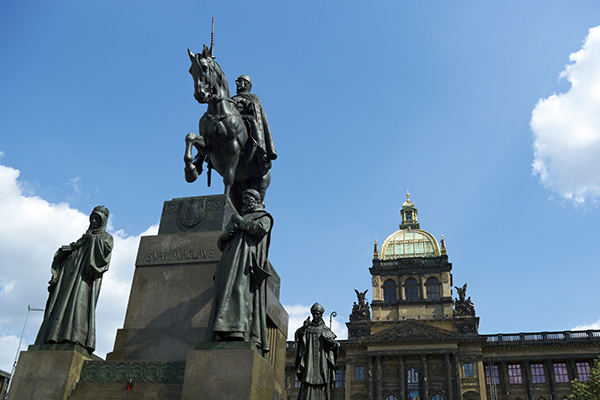Every year hundreds of people sing the popular Christmas Carol “Good King Wenceslas”, but was he a real person or is the carol about some fictitious King?
Good King Wenceslas looked out
On the Feast of Stephen.
All the snow lay round about
Deep and Crisp and Even.
Brightly shone the moon that night
Though the frost was cruel
When a poor man came in sight
Gath’ring winter fuel.
– Lyrics by John Mason Neal, Warden of Sackville College, East Grinstead UK 1853
The carol tells the story of a King who goes out to give alms to a poor peasant on the Feast of Stephen, the second day of Christmas December 26th. During the journey his page is battling against the cold weather and feels he cannot continue but the heat rising from his Master’s footsteps in the snow revives him and enables him to carry on.
The Real King Wenceslas
The legend is based on the life of Wenceslas I, Duke of Bohemia. Born in 907AD in the castle of Stochov near Prague he was raised by his grandmother Ludmilla. When he was 13 his father Ratislav died and he succeeded to the title but because he was too young to rule his mother Drahomira became Regent.
She was opposed to Christianity and used her new power to persecute followers of the religion. She refused to let Wenceslas see his grandmother because she was scared the two would plot to overthrow her and not long after his father’s death Ludmilla was strangled at Tetin Castle allegedly at Drahomira’s command. After her death Wenceslas’ grandmother was revered as a Saint.
At the age of 18 he seized power from his evil mother and began to rule himself. He stopped the persecution of priests and tamed the rebellious nobility but a lot of the Bohemian nobles resented him for his kindness to the poor and his attempts to spread Christianity. They were even more resentful when he swore allegiance to King Henry I of Germany.
Wenceslas’ Assassination and Sainthood
Wenceslas was a Catholic and his greatest enemy was his brother Boleslav who joined forces with the rebellious nobles to plot the Duke’s assassination. Boleslav invited his brother to a religious festival in 935AD and attacked him as they made their way to Mass. As they were struggling the nobles stepped in and murdered him.
After his death he was considered a Saint and a Wenceslas cult was formed both in Bohemia and in England. Although he was only a Duke whilst he was alive Holy Roman Emperor Otto I posthumously conferred on him “Rgal Dignity and Title” which is why he is referred to as “Good King Wenceslas” in the carol.
The Chronicler Cosmos of Prague wrote about the legendary Duke in 1119AD
“No-one doubts that rising every night from a noble bed, with bare feet and only one Chamberlain he went around God’s churches and gave alms generously to widows, orphans, those in prison and afflicted by every difficulty. So much so that he was considered not a Prince, but the Father or all the wretched.”
Wenceslas became Bohemia’s most famous martyr and Patron Saint and a Statue of him stands in Wenceslas Square in Prague. Legend has it that if Bohemia (now the Czech Republic) is in danger or close to ruin the statue will come alive and Wenceslas will raise the army.








